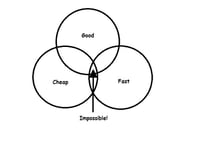Published on
DAETE: Benchmarking Lifelong Learning Management

The case study of quality management in LLL is based on the project DAETE (daete.up.pt). This was a project funded by the European Commission and by the United States of America (FIPSE) in the Atlantis program. In this project tools were developed and tested that enabled the development of processes of improvement in Lifelong Learning (LLL) management. This project included a self-assessment matrix for Higher Education organizations involved in Continuing Education (CE) and in LLL. The tool was based on tools provided by EFQM, European Foundation for Quality Management. These tools were adapted to LLL and helped the external evaluation of LLL centers and comparison of performance with other similar organizations.
There were several self-assessment tests made that involved 42 institutions of LLL and HE in Europe, in the USA and in China. The testing and the analysis were performed in detail with institutions that have obtained grades of Good or Very Good during the evaluation using the EFQM tools. The goal was to create a repository of examples of quality and of best practices. The structural differences between organizations were taken into account allowing to cluster the results of institutions with similar characteristics. The process was adopted by the International Association of Continuing Engineering Education as an instrument for evaluating the quality of management of centres worldwide.
This model to assess the performance of LLL centres is based on the analysis of indicators of performance in terms of resource utilization and analysis of results. The proposed system is composed initially by this self-evaluation and is followed by further improvements. The planned changes are assessed in future occasions and the process is repeated. The self-evaluation can be complemented by external review elaborated by peers or experts.
The principles of the DAETE method are:
- Diagnostic tool: the matrix is intended to be used for diagnosis and as a method for continuous improvement and as a tool of transformation of the organization.
- Level of the people who will use the tool: the matrix will be, if possible, used by the leaders of the institution, of the centre or of the department. In some cases, it may be appropriate for the institution to widen participation in self-assessment to other elements in order to address all perspectives of the self-assessment.
- Different types of institutions: it is necessary to consider that there is a wide variety of institutions and organizations with different characteristics such as diversity of courses, of dimension, of organization, of financing, etc.
- Use and applicability: focus on the use of the self-assessment model in all academic areas and in various types of institutions.
The DAETE model is a practical tool to help organizations achieve high levels of quality by measuring where they are to improve to achieve excellence. The model is based on nine basic criteria which serve to ensure the excellence of an organization. The criteria include five chapters about processes and four chapters about results. The first five discuss what makes an excellent organization and the other four check the results that an organization is supposed to achieve when looking for excellence.
Each of the nine criteria has sub-criteria chosen to characterize excellence in LLL centres. For each sub-criteria there are five levels chosen according to the following rules:
- Level 1: the quality depends exclusively on the individual (there is some process); the activities depend on individual initiatives and are not scheduled globally.
- Level 2: the quality is based on basic processes; responsibility for each activity ceases to be individual and tends to be the sharing of responsibilities by the department, with some short-term planning; there is some degree of process definition, however there is no documentation; performance is evaluated on an occasional basis.
- Level 3: there is guidance through processes and some guarantee of quality (intermediate processes); there are established standards, procedures and directives known throughout the organization; activities are carried out in accordance with these procedures; activities are planned with medium-term objectives and evaluation indicators are defined.
- Level 4: there are systematic evaluation and improvement of processes (sophisticated processes); established procedures are systematically evaluated to create possible improvements; there is a guideline clearly visible to the user in the organization; activities are planned with well-defined objectives, the medium and long term.
- Level 5: there is a task to have an excellence recognized externally (processes of excellence); there is exchange of knowledge and experiences throughout the organization, within the framework of the organization and with entities outside the organization (including competitors); the formulation and improvement of the procedures of the organization are in compliance with internal and external; the experiences and best practices are shared with other entities; there are partnerships and exchanges of information with users, with teachers and with other centres, etc.
The model is intended to have a journey to excellence based on continuous improvement, self-assessment, good management practices and a planning discipline. This self-assessment method has enormous potential to become a standard in the quality of LLL providers. The adopted nine criteria are leadership, policy and strategy, people, partnerships and resources, processes, user results, organizational results, results for society and performance results.
The satisfaction with the method was always positive in the different cases where it was used. There was criticism and suggestions for improvement of the method that were constructive and indication of improvements.
The results of nearly four years of experimentation and improvement allowed the assessment of the effectiveness and value of the method. This acceptance by multiple users in different contexts leads to thinking that this is an appropriate instrument to be used in evaluation and in improvement of the quality of centres of LLL.
Author Perspective: Administrator



